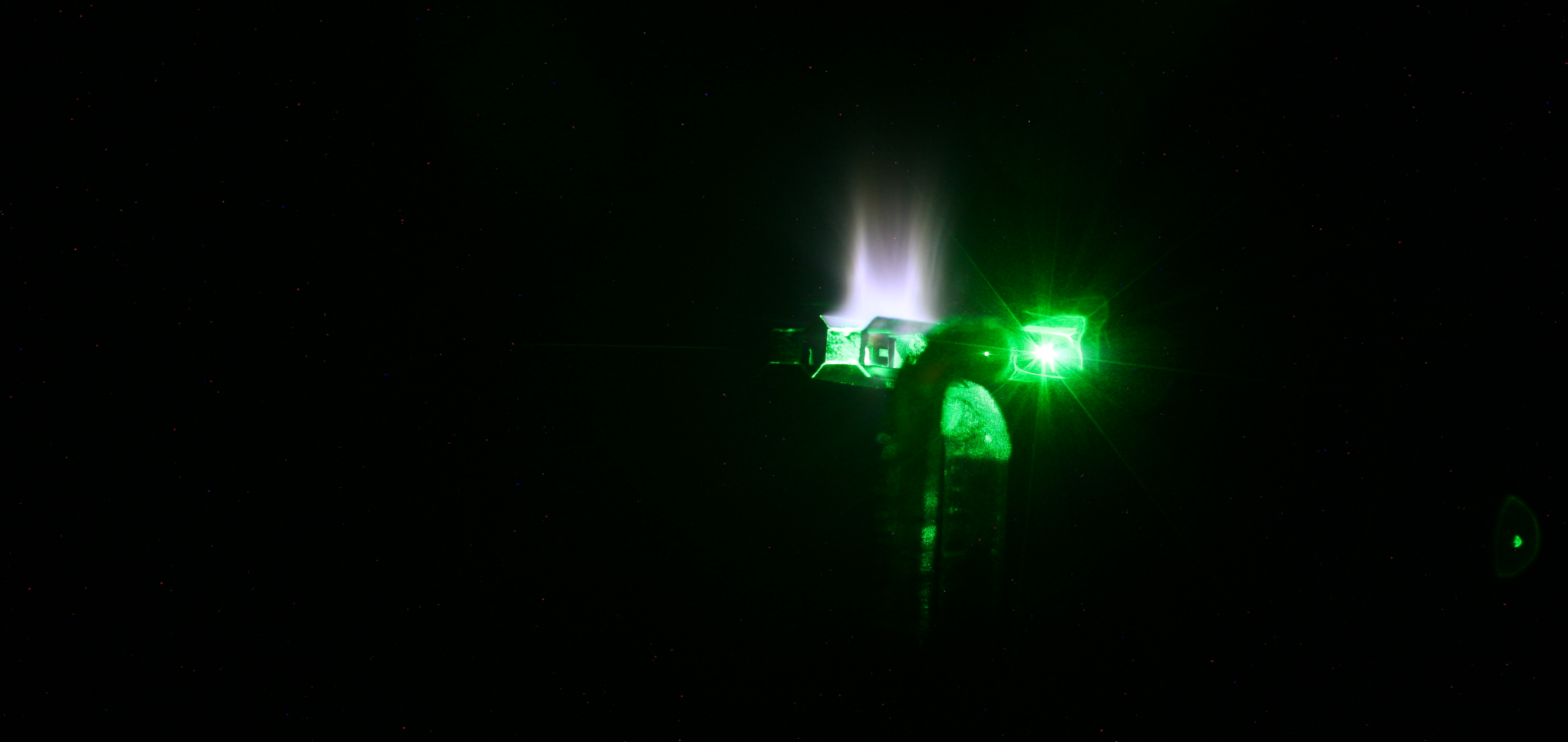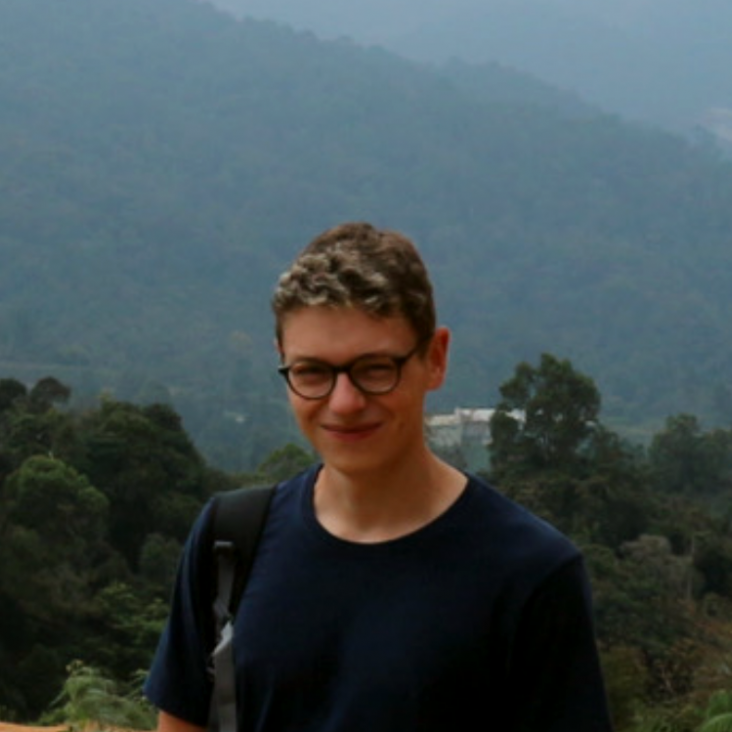I am a graduate student working with Prof. Gianluca Gregori’s High-Energy Density Laboratory Astrophysics (HEDLA) group within the Atomic and Laser Physics sub-department. I am interested in developing experiments which use high-intensity lasers and particle beams to study the behaviour of states of matter that are found in extreme astrophysical environments such as black holes and neutron stars.

This is a photograph taken of an experiment at the Rutherford Appleton Laboratory's VULCAN laser facility to study astrophysical dust in the laboratory. Astrophysical dust is made up of microscopic grains of matter. It fills the interstellar space around us, obstructing our view of space in every direction. The effects of dust need to be accounted for in telescope observations; it especially affects the highly sensitive measurements of the cosmic microwave background which tell us about the early universe. It is very important to have accurate models of how dust behaves in plasma and how it affects our astrophysical observations. Laboratory experiments are now being developed which can directly validate such models. At the VULCAN laser facility, the power of the laser beam pulses can exceed thousands of times the UK's peak electrical demand. In an experiment at VULCAN we fired these lasers at a solid target containing grains of metal aiming to mimic astrophysical dust. The target is heated by the laser so that it becomes a shocked plasma, and white light can be seen emitted from a region of the hot expanding plasma. A bright green spot marks where another laser hits a piece of gold foil to send a stream of protons through the target. The deflection of these protons can tell us vital information about the electromagnetic fields surrounding the dust grains and the dynamics of the dust grains in the plasma.
Charles Arrowsmith
Visitor

